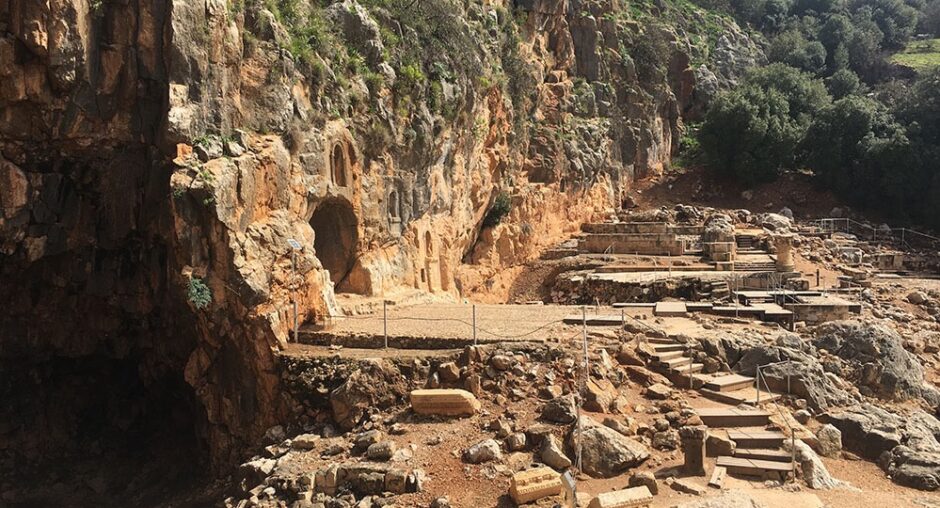Last November (2022), my family had the privilege of traveling to Israel. We weren’t really sure what to expect, but our itinerary was jam packed. Each day was filled with visiting different historic biblical sites where Jesus and his disciples walked or where major events happened throughout the Bible like Mount Carmel, the Valley of Armageddon, the Garden of Gethsemane, and Jerusalem, just to name a few. Trying to take it all in was like drinking our spiritual history from a fire hose!
One of the most meaningful places for me personally was Caesarea Philippi, located in the northern region of the Land of Canaan at the base of Mount Hermon. It didn’t jump off the page of the itinerary as much as a place like the Mount of Olives, and it was a relatively brief stop, but it left a significant impact on me.
This site, also called Panias, was well known throughout Jewish literature and biblical texts as a pagan center of worship and sacrifice. Over twenty temples to celestial gods have been excavated there. In Matthew 16, we see Jesus bring his disciples to this location where he asked them who people were saying he was. They told him that some were calling him John the Baptist, Elijah, Jeremiah, or one of the other prophets (v. 14). Then Jesus asked his disciples who they said he was. This is the first utterance of one of his disciples, namely Peter, calling him “the Christ, the Son of the living God” (Matthew 16:16).
Jesus’s response to Peter is one of great encouragement and blessing. “And Jesus answered him, ‘Blessed are you Simon Bar-Jonah! For flesh and blood has not revealed this to you, but my Father who is in heaven. And I tell you, you are Peter, and on this rock I will build my church, and the gates of hell shall not prevail against it’” (Matthew 16:17-18).
In historic Jewish understanding, the mouth of the cave at Panias contained an altar to Hades, the god of the underworld, and as such was known as the “gates of hell.” In the past, I might have glossed over this passage, but standing at this exact location and picturing Jesus gesturing toward the pagan altars when saying these words deepened my understanding of what Jesus was truly saying to his disciples and to us.
Many scholars believe it was on Mount Hermon where the transfiguration of Jesus took place in the next chapter of Matthew. Between Peter’s declaration of Jesus being the Son of God and God himself confirming it at the transfiguration, God is putting evil spiritual forces on notice that he has arrived and will conquer. He is reminding them, and us, exactly who he is.
While our nation in our time may not have the same collection of physical altars to a variety of pagan gods in a single location, there is no shortage of idolatry and paganism in our culture. We can be easily discouraged in the face of what we see, but we can find hope and take courage knowing these evil forces will not prevail against Christ’s Bride, his Church! We know how the story will end. May that truth fill us with great and abiding hope as we walk through this dark world.
Note: I found Michael Heiser’s book, Unseen Realm, very helpful in furthering my study on the significance of this historic location.





